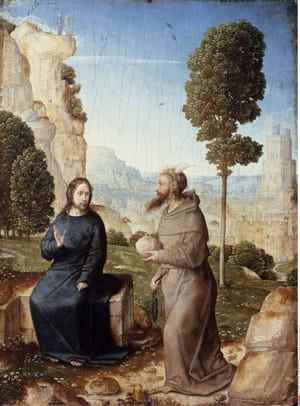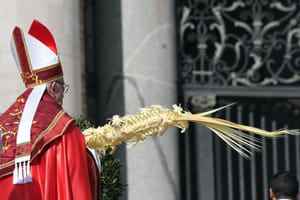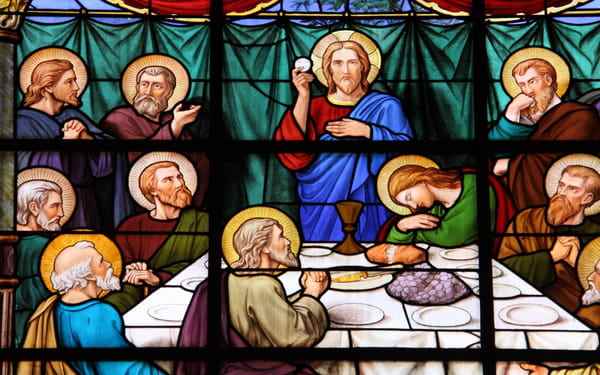LENT. The 2023 Lenten fast kicks off with Ash Wednesday for Christians. Origin and meaning, rules or even etymology… Here are the secrets of this key period in the eyes of believers.
[Mis à jour le 22 février 2023 à 11h45] Lent begins this Wednesday, February 22 this year. It always begins with Ash Wednesday. And ends with the Sunday of Easter, which corresponds to Sunday, April 9 in 2023. Although its dates vary, Lent always spans 46 days. In summary, this symbolic parenthesis honors, for the faithful, the past 40 days jesus christ in the desertas told in the Bible.
Even today, Lent is a way for Catholics to prepare their bodies and souls for the great Christian feast of Easter. Among Protestants, the Lenten fast is less important. For the Orthodox, it is honored on other dates: in 2023, the Great Orthodox Lent goes from February 27 to April 7.
Dates, meaning and etymology of Lent, sequence and symbolism of Ash Wednesday, meaning of Holy Week and Good Friday, difference between Protestant, Orthodox or Muslim Lent or rules of fasting… Discover in this special page the ” backstage” of the period of Lent among Christians.
- Ash Wednesday: Wednesday, February 22, 2023
- “Mi-Lent” celebration: Thursday, March 16, 2023
- Palm Sunday opening Holy Week: Sunday April 2, 2023
- Maundy Thursday, Good Friday and Holy Saturday on April 6, 7 and 8, 2023
- Easter Sunday, Sunday April 9, 2023
- Easter Monday bank holiday Monday April 10, 2023
The start dates of Catholic and Orthodox Lent (two streams of the Christian religion) are different. It thus begins on the date of “Pure Monday”, fixed for February 27, 2023 among the Orthodox and Catholics of the Byzantine rite, i.e. in the Eastern Churches.

Lent has its origins in a biblical episode: the temptation of Christ. According to the Gospels, shortly after his baptism (around the age of 30), Jesus spent forty days of fasting in the Judean desert, east of Jerusalem. There, the Devil would have appeared to him to tempt him. The texts of Matthew and Luke give the most details of this supposed event. After spending five weeks fasting among wild beasts, jesus christ is visited by Satan, who makes three proposals to him. First, change the stones into bread to relieve his hunger. Then, the evil one would have proposed to Jesus to prove his divine nature by jumping from the top of the Temple of Jerusalem and being caught up by angels. Finally, at the top of a mountain, the Devil offers Jesus to offer him all the kingdoms of the world in exchange for his submission… In all three cases, Jesus refuses to be tempted.
The Catholic Church sums up this episode and the tradition of Lent as follows: “The Church unites each year through the forty days of Great Lent to the mystery of Jesus in the desert” (Catechism of the Catholic Church, no. 540) . However, historians and theologians remain divided on the nature of the event: real retreat in the desert or parable of the moral torments of Christ? Whatever the “answer”, the period of Lent invites Christians to remember this episode in the spirit of collective retreat for a month. And said reflection continues until Holy Week, a period of remembrance of the death and then the resurrection of Christ for Christians (Catholics, Orthodox, Protestants…). Lent therefore also represents for practitioners the opportunity to prepare serenely to celebrate the Easter solemnities, through a purification of their heart; what they consider a good practice of the Christian life and an attitude of penance.
For practicing Christians, the period of Lent is marked by a reduced consumption of food which contrasts precisely with the carnivals, donuts and other festivities which traditionally precede Lent. Ash Wednesday. But Lent also and above all corresponds to a spiritual search. Because it goes, for Christians, beyond simple food fasting. It is a period of being present to oneself, to God and to others in addition to frugal food. A date of penance, Lent indeed commemorates very specific episodes in the life of Jesus Christ as described by the Gospels (as explained above).
The word Lent has its roots in “Quadragesima”. In Latin, this word means “fortieth” : it recalls the duration of this period which starts the day after Shrove Tuesday and ends on Holy Saturday, the eve of Easter… It thus lasts, as a reminder, forty days, not counting Sundays. A figure often recurring in the Catholic religion, the 40 symbolizes a new beginning.
Lent is marked by several important dates for Christians. Starting with Ash Wednesday, harsh aftermath of Mardi Gras. Ash Wednesday is that mysterious day when the priest draws a cross on the forehead of the faithful and declares: “Man, remember that you are dust and that you will return to dust”. This symbolic evocation of death has existed since the 6th century. In their representation, however, the Ashes relate to several phases of the believer’s relationship to Christ:
- the vulnerable condition of man, in other words his weakness, his vanity and his propensity to commit sins;
- man’s intense prayer to God for help;
- the resurrection in which every man participates within the framework of the “triumph of Christ”.
The 4th Sunday of Lent – known as Lætare Sunday (from the Latin “to rejoice”) – is another of these highlights. It is a time of pause in the austerity of Lent, where the celebrations find a more festive aspect (flowers, bells, clothes…). Objective: to give the faithful a glimpse of the joys of Easter.

At the end of Lent there is a third key moment: Holy Week, commemorating the Passion of Christ. It opens a week before Easter, on Palm Sunday. On this day, in the Catholic rite, the faithful bring palms (branches), which are blessed during the mass. This ceremony is a tribute to the triumphal entry of Jesus into Jerusalem: according to the Bible, the people then greeted him by covering their way with a carpet of clothes and palm leaves.
Holy Week continues on Holy Thursday: in the Gospels, this day is that of the Last Supper, the last meal shared between Jesus and his apostles and the first Eucharist. Good Friday is the day of commemoration of the death of Jesus Christ. It is customary not to celebrate mass, but to follow a way of the cross (a procession recalling the episodes of the crucifixion). Holy Saturday is the last day dedicated to fasting and reflection. In the evening, practicing Catholics gather for the Easter Vigil. This night marks the end of Lent and the start of Easter celebrations.

The rules of the Lenten fast have lost their force over the years, including among Christians. It is still for the most practicing eat less and limit yourself to lean foods (one meal a day, frugal, based on bread and rice for example). Failing that, they can also deprive themselves of foods representing their cute sins and appealing to their gluttony. Before starting this parenthesis of frugality over more than a month, the religious tradition wants that the food reserves are emptied to avoid waste: pancakes, donuts and other sweets are thus devoured at the time of Mardi Gras, the day before the start of the Lent.
The Lenten fast is also linked to a abstinence other than strictly food : cigarette, alcohol, coffee, smartphones or other screens… In short, the “efforts” must also concern daily addictions. Goal for practitioners? Devote more time to others. Efforts that end with Holy Week, which commemorates for believers the Passion of Christ.
The issue of meat is particularly important for observant Catholics during Lent, as the practice of limited or no meat consumption has taken hold in some homes over time. The fish therefore appeared as an alternative during this period of deprivation, although this practice is not bound by any formal rules. Good Friday being a particularly important date in this deprivation, the prohibition of meat in memory of the day of the crucifixion and the consumption of fish are often imposed there. The practice goes beyond Good Friday and some households have taken to replacing meat with fish every Friday. A use that remains common in many families – including little or no practicing – in France as elsewhere.
The fish has also had an important symbolic place among Catholics since the beginning of Christianity. Derived from the Greek Ichthus, it recalls the life and abundance promised by Christ, who moreover joined the action to the word by multiplying the fish during the episode of the Bible called the “Multiplication of the loaves”. The fish is also summoned in another episode of the New Testament, that of the “Miraculous Fishing”. In ancient Rome, the first Christians were also called the “pisci”.
If in the Bible, the apostles do not commemorate the death of Jesus by depriving themselves of food, the practice quickly settled among the first Christians. It was in the 4th century that the celebrations of Easter and Lent were formalized by the Church (not yet divided between Catholics, Orthodox and Protestants): dates and rituals were gradually established in Late Antiquity and the Middle Ages. Many believers then practiced xerophagy (consumption of bread and dried fruit only) and deprived themselves of the evening meal. But fasting is a very ancient religious practice that does not only concern Christians.
For example, it is already mentioned in many passages of the Old Testament or in certain Buddhist teachings, and today obviously concerns Muslims. during Ramadan, but also the Jews, at the time of Yom Kippur. From the Renaissance, the Protestant schism, followed by the relative secularization of Western society and the relaxation of the instructions given to Christians made practices more diverse. Among Catholics, fasting can be replaced or supplemented by good deeds or prayers. Protestants consider this period as a moment of reflection where one must turn to Christ, without recommending food penance. Finally, among the Orthodox, fasting remains an important element in what is called Great Lent. His practice must be framed and defined with his spiritual Father, generally a confessor.
